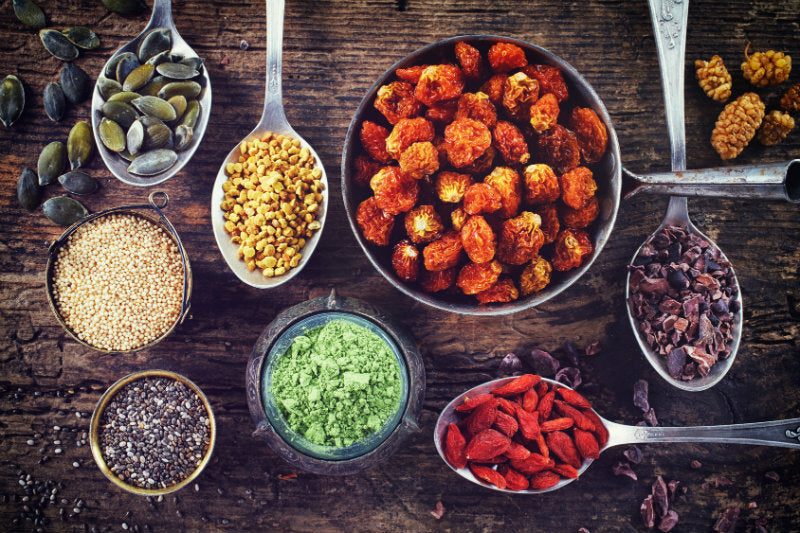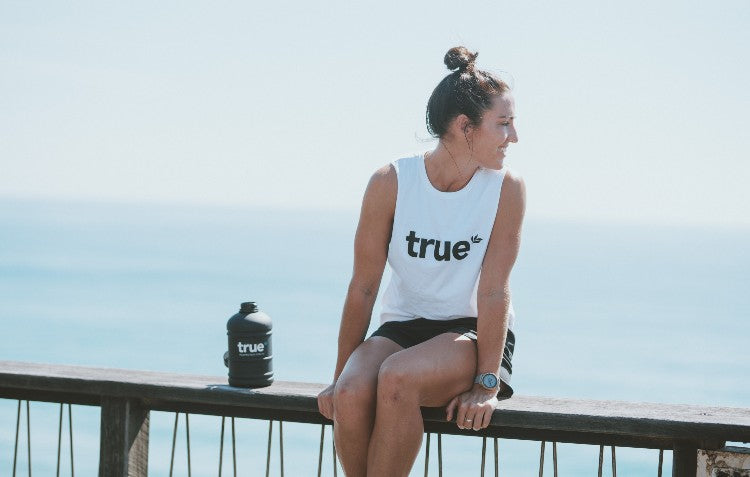You could be eating a super healthy diet, exercising regularly and making good lifestyle choices, but if your portioning is all out of whack then it might be what’s standing in the way of you losing, maintaining or gaining weight successfully.
The proverbial ‘they’ tell us abs are made in the kitchen, with around 80 per cent of weight loss accredited to the food and drink choices we make. However, whilst this may not be strictly true, it is fact that a primary focus on diet is key to achieving weight-related goals.
A common misstep in weight loss is adding too much food to your plate, which can have more ramifications than just a few extra calories. Over time, uncontrolled portions can increase your risk of heart disease, diabetes, obesity and other lifestyle-related conditions, as well as cause an imbalance in your blood sugar levels. However, in a world of supersized meals, it’s not always easy to know how much is the right amount to eat, and overeating has become a serious problem because of it.
Perfecting your portions isn’t just about losing weight, it’s just as important to a well-balanced lifestyle in which you want to maintain a healthy weight. And it has other benefits too. Eating a smaller, more controlled portion of food can aid digestion, improve satiety, and even save money in the long run.
Forget calorie counting, fad diets and cutting out food groups, instead look to your plate as a weight-loss tool to bring your portions back down to size.

‘As a simple guide, if you’re looking at the plate in front of you, you should make sure that half of your plate is made up of salad and non-starchy vegetables, about a quarter of your plate should be a good quality complex carbohydrate like brown rice, couscous, quinoa, sweet potato or oats, and the other quarter should be a protein source, so that might be a lean piece of meat or fish. This is a good general guide to keep your portions in check,’ explains Roslyn Yee, True Protein’s Accredited Sports Dietitian.
Dividing up your plate is like having a built-in, simplified portion control tool. If you’re visualising your plate in the way Roslyn describes, then there won’t be room for a few extra potatoes or an over-sized steak. It’s a great way of helping you to make healthy choices and stay in control when going out to eat, too.
Another way to be mindful of how much you're consuming is to use the recommended daily intakes set out by the Australian Dietary Guidelines, which advises adult men and women aged 19-50 to consume the following standard serves of the five key food groups:
| Veg & legumes (approx. 75g per serve) | Fruit (approx. 150g per serve) | Grains (approx. 500kJ per serve) | Lean meat, fish, poultry, eggs, nuts, seeds, legumes, beans (approx. 500-600kJ per serve) | Milk, yoghurt, cheese & alternatives (approx. 500-600kJ per serve) | |
| Women | 5 | 2 | 6 | 2.5 | 2.5 |
| Men | 6 | 2 | 6 | 3 | 2.5 |
This, of course, will differ if you are pregnant or breastfeeding. Also included in our daily diets are ‘discretionary’ foods that we eat but don’t need, like lollies, biscuits and cakes, that can generally be enjoyed in small amounts (usually 500-600kJ per serve) as an occasional treat, alongside unsaturated spreads and oils, saturated fats, added salt and sugars, and alcohol. Together these foods make up our diet and keeping the recommended serves in mind when planning your daily portions will help you to make good choices, especially when you don’t have scales or nutritional values to hand.
Some of you may think that these guidelines are a little heavy in terms of carbohydrate foods, or unachievable in meeting the recommended vegetable intake. However, one serve might be considerably smaller than you think, and often people consume too large a portion unknowingly. The Australian Dietary Guidelines are intended to be used as just that, a guideline. Despite being created by nutritional and medical professionals reviewing over 55,000 scientific journal articles, the guidelines shouldn’t replace individualised medical or dietetic advice, particularly if you have a specific medical condition, or if you are training for sporting performance. If you are at the beginning of your health and fitness journey, then the guidelines are the best place to start.

Alongside portion control, the quality of the food you’re eating is also crucial. Being conscious of what you consume will pave the way for a healthier diet, and there are few simple swaps you can make to boost the nutritional value of what’s on your plate:
• Slash the calories by swapping sugar for cinnamon to sweeten your morning oats or cup of coffee. Cinnamon is not only sweet but loaded with antioxidants, whilst cinnamaldehyde, the main active component in the spice, is believed to help fight some types of infection.
• Swap store-bought salad dressings for homemade. Infusing a little olive oil with fresh herbs and balsamic vinegar will not only taste better, but it’s free of all preservatives and added .jpg) sugars, plus you’re in complete control of the number and measurement of ingredients.
sugars, plus you’re in complete control of the number and measurement of ingredients.
• Craving Mexican food? Whip up a naked burrito bowl and swap sour cream for a homemade salsa. Chopped tomatoes, red onion, fresh coriander, sliced chilli and a squeeze of lime is healthy yet delicious.
• Try a protein shake instead of your usual snack. True’s range of tasty protein flavours mix perfectly with water, keeping calories to a minimum whilst curing any sweet cravings.
• Give your salad a vitamin boost by topping with some fresh spinach and crushed nuts for a controlled portion of healthy fats.
• Trade in your usual pizza base for a cauliflower crust to increase your veggie intake. Simply whizz up a cauli, microwave to cook, drain any liquid then combine with beaten egg, grated Parmesan and a little seasoning before pressing into shape and baking. Top with tomato purée and plenty of veg.
• Swap a burger for a grilled portobello mushroom topped with mustard, rocket, avocado, tomato and sliced onion to help you reach your five-a-day. If you want to cut down on the carb content then try swapping a conventional burger bun for two large slices of sweet potato, a wholegrain seedy wrap, or package it up in a couple of lettuce leaves – it will still taste great!
• Plan ahead for your snacks. We all know slices of raw pepper taste great with hummus, but if you want to mix things up a bit then why not try sliced cucumber with homemade guacamole? Mash some avo, add fresh chilli, coriander, a little red onion and a squeeze of lime and you’ve got a mouth-watering alternative to tortilla chips and dip!

A standard nine-inch plate is ideal for correctly portioning your chosen lunch or dinner, whilst measuring cups and spoons will help you to get the serves just right to ensure you’re staying within your recommended daily intake. It’s important to pay attention to the serves per pack if you’re using any food jars or packets, as often the amount of serves is more than we actually divvy it up by! Other simple changes you can make to the way you eat, like not skipping meals to avoid the need for extra large portions when you are hungry, and chewing food slowly to help with digestion and reduce the feelings of hunger more quickly, can also make a big difference.
Final thoughts…
Portion control is one of the simplest and most effective ways to lose weight as well as stay on top of a healthy diet if you wish to maintain or even gain weight, without the need to cut out any food groups. Using Roslyn’s easy method to visualise an imaginary divide on your plate can help to create good habits when it comes to dishing up lunch or dinner, whilst being mindful of the Australian Dietary Guidelines will help you to make better choices on the amount of each food group you should be consuming per day, to help you stay in control.



